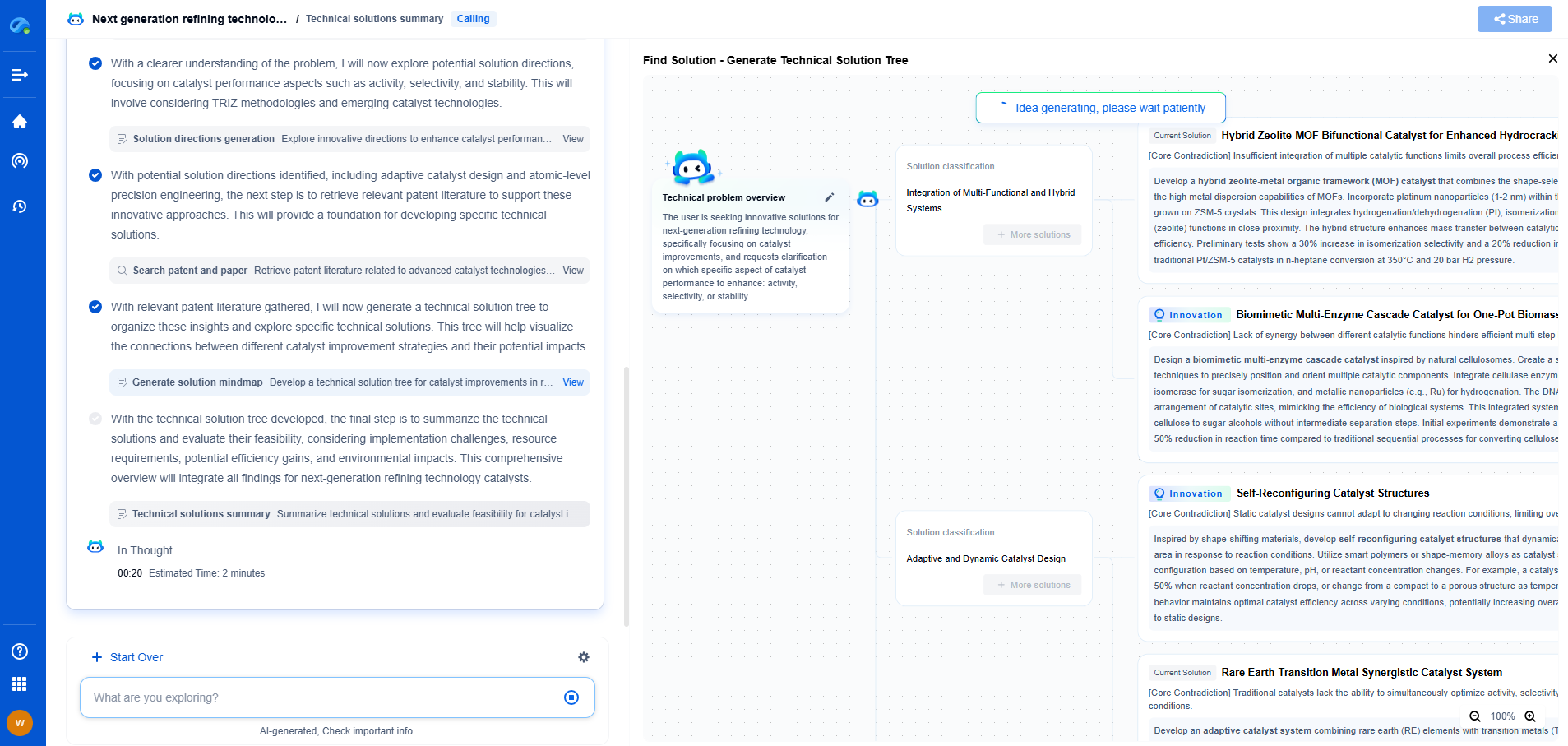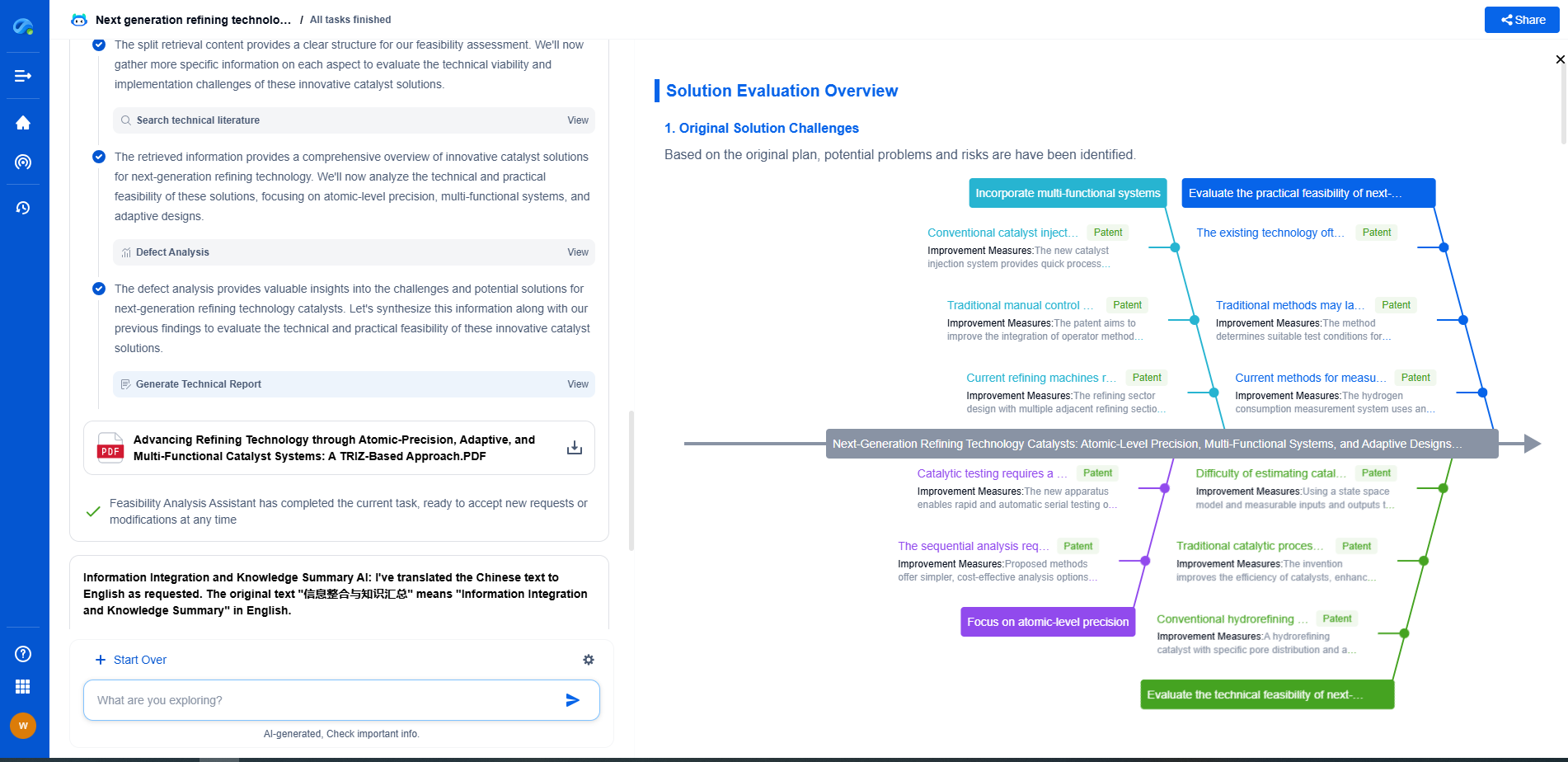Membrane bioreactor vs conventional activated sludge in wastewater treatment
JUL 25, 2025 |
Wastewater treatment is a crucial aspect of environmental management, aimed at reducing pollutants in sewage and industrial effluents before they are released into natural water bodies. The two most common systems employed in wastewater treatment are the Membrane Bioreactor (MBR) and the Conventional Activated Sludge (CAS) process. Each system has its own merits and drawbacks, making them suitable for different applications. This article delves into the comparative analysis of these two technologies, highlighting their strengths and weaknesses to help you make informed decisions.
Understanding Conventional Activated Sludge
Conventional Activated Sludge (CAS) is one of the oldest and most widely used wastewater treatment processes. It involves the biological degradation of organic matter using microorganisms in an aeration tank followed by sedimentation in a secondary clarifier. The sludge is then recycled back into the system to maintain an adequate concentration of microorganisms.
Pros of Conventional Activated Sludge
1. Proven Track Record: CAS has been used for over a century, with numerous installations worldwide. Its long history has provided a wealth of operational experience and understanding.
2. Cost-Effective: Initial capital and operational costs tend to be lower than more advanced systems, making CAS a feasible option for municipalities with limited budgets.
3. Simplicity: The technology is straightforward and well-understood, with many trained operators and available resources for troubleshooting.
Cons of Conventional Activated Sludge
1. Large Footprint: CAS systems require significant land area for aeration tanks and secondary clarifiers, making them unsuitable for locations with space constraints.
2. Sludge Management: The process generates a substantial amount of excess sludge that requires proper handling and disposal, leading to additional expenses.
3. Sensitivity to Load Variations: CAS can be less efficient under fluctuating load conditions, potentially resulting in insufficient treatment.
Exploring Membrane Bioreactors
Membrane Bioreactors (MBR) combine biological treatment with membrane filtration, providing both biological degradation and solids separation in a single step. The membranes, typically microfiltration or ultrafiltration, replace the secondary clarifier, resulting in a more compact system.
Advantages of Membrane Bioreactors
1. Superior Effluent Quality: MBR systems produce high-quality effluent with significantly lower levels of suspended solids and pathogens, making it suitable for water reuse applications.
2. Smaller Footprint: The integration of biological treatment and membrane filtration reduces the space requirements by up to 50% compared to CAS.
3. Resilience to Load Variations: MBR systems are more adaptable to variations in influent composition and load, maintaining consistent performance.
Disadvantages of Membrane Bioreactors
1. Higher Costs: Both the initial setup and operational costs are higher due to the sophisticated technology and membrane maintenance requirements.
2. Membrane Fouling: Membrane fouling is a common issue, necessitating regular maintenance and cleaning, which can increase downtime and operational expenses.
3. Technical Complexity: The system requires skilled operators with specialized knowledge to manage and troubleshoot potential issues.
Comparative Analysis: MBR vs. CAS
When comparing MBR and CAS, several factors must be taken into account:
1. Cost Considerations: While MBR systems offer improved performance and reduced space requirements, their higher costs make them more suitable for regions with stringent effluent quality regulations or limited land availability.
2. Effluent Quality: MBR is the preferred choice for applications requiring high-quality effluent for reuse or discharge into sensitive environments.
3. Scalability: CAS systems are advantageous for large-scale applications due to their lower costs, whereas MBR systems are better suited for smaller, high-value installations.
Conclusion
Both Membrane Bioreactors and Conventional Activated Sludge systems have carved their niches in wastewater treatment, each offering unique advantages and facing distinct challenges. The choice between these technologies should be guided by specific project requirements, including budget constraints, space availability, effluent quality standards, and technical capabilities. Understanding the strengths and limitations of each system will enable decision-makers to select the most appropriate technology for their wastewater treatment needs, ensuring efficient and sustainable environmental management.
From next-generation membrane materials to high-efficiency separation processes for pharmaceuticals, water treatment, food processing, or energy systems, the filtration & separation industry is rapidly evolving with a surge in material innovation, microstructure design, and process optimization.
Patsnap Eureka, our intelligent AI assistant built for R&D professionals in high-tech sectors, empowers you with real-time expert-level analysis, technology roadmap exploration, and strategic mapping of core patents—all within a seamless, user-friendly interface.
Whether you're designing the next high-throughput filter, optimizing nanostructured surfaces, or exploring new separation media for emerging industries—Patsnap Eureka gives you AI-driven insights in seconds, helping you move from ideation to innovation with confidence.
🚀 Start your free trial today and experience how Eureka transforms filtration innovation—from reactive to predictive.
- R&D
- Intellectual Property
- Life Sciences
- Materials
- Tech Scout
- Unparalleled Data Quality
- Higher Quality Content
- 60% Fewer Hallucinations
Browse by: Latest US Patents, China's latest patents, Technical Efficacy Thesaurus, Application Domain, Technology Topic, Popular Technical Reports.
© 2025 PatSnap. All rights reserved.Legal|Privacy policy|Modern Slavery Act Transparency Statement|Sitemap|About US| Contact US: help@patsnap.com

